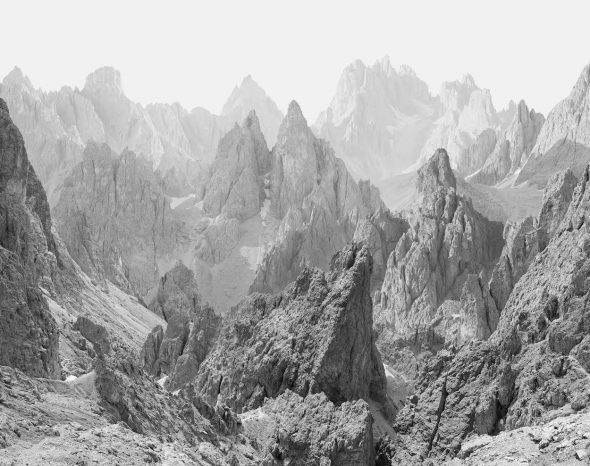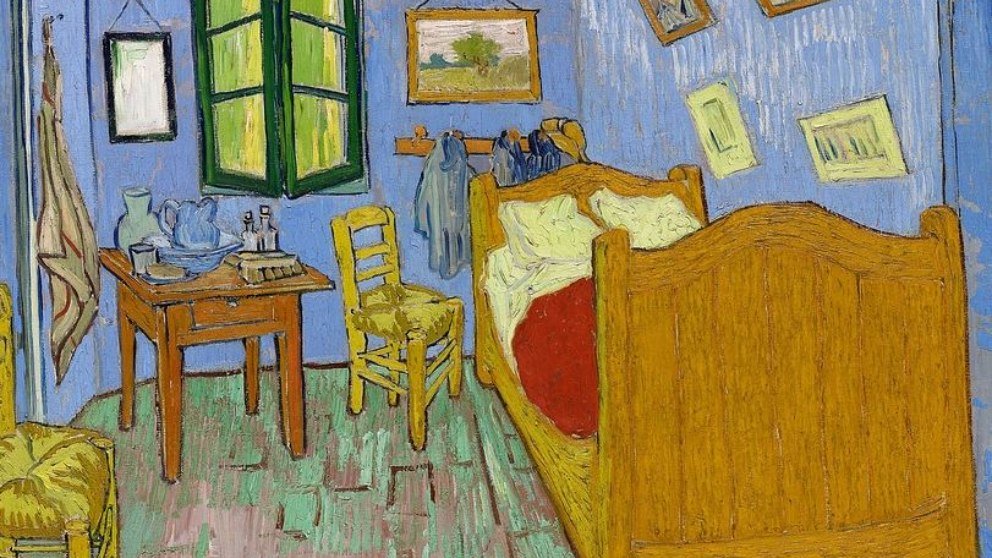George Perec
Especies de Espacios
Obras que emergieron luego de la lectura
Synopsis
Trinity is an audiovisual interactive dance piece which tells the journey of a body going through different states of perception of the space. Through movement, the body is immersed in an environment of textures and audiovisual landscapes that not only accompany but will push to a transformation process.
A transformation process achieved through the close link between the triad of movement, light and sound shaping a language that allows the expression of these elements in space, while causing profound changes in physical behavior to the body through the reverberation and echoes of its own actions.
Interaction
This work proposes a profound, clear and efficient interaction between its three elements: the triad of movement, sound and visuals. This interaction is understood as a dialogue which passes through different levels of intensity and transformations throughout the piece and is focused in the detection of the following qualities and patterns of movement like: forces and directions, acceleration, position, speed and body area.
The interaction system works through a videocamera installed at top of the stage under infrared lighting. The entire performance has been developed and is performed in real time with the programming tool MAX/MSP from Cycling74 and the computer vision library CV.JIT.
Performed at: IDN Festival, LEV Festival, Coded Matter(s), Mira Festival, Eufonic, La Merçe, IPAM@Grec
Cuppetelli and Mendoza, with Peter Segerstrom.
Standing Wave is an interactive, audiovisual installation that consists of twin curved sculptures covered with sound-absorbent foam, illuminated by a video projection of computer-generated lines that reacts to your movements. These movements also control a real time sound synthesis system, whose outputs are calibrated to both mirror and complement the interactive video projection.
The title Standing Wave is an allusion to the shape of the installation itself, a reference the physical phenomenon of the same name, and a homage to Naum Gabo's work, with which the piece shares its title. The installation consists of two curved surfaces, 13’ wide and approximately 10’ tall, arcing towards you, covered in serrated acoustic foam panels that do sound absorption as well as act as the projection surface. The projection, like in our previous work, consists of computer-generated lines that move in a naturalistic way when you move in front of the installation. As the lines move over the serrated foam, moire patterns are generated by the interference of these two elements, which creates a rather organic visual phenomenon. As the lines move, they influence an interactive surround-sound system which consists of mostly deep bass sounds combined with high-frequency tones. Like our previous work, the interface of the installation is made of small video cameras connected to a computer, which processes their image to determine the strength and direction of your movements, similar in the way that systems such as the Kinect or the EyeToy work.
The work is a collaboration between Cuppetelli and Mendoza, and musician, sound designer and artist Peter Segerstrom. The installation is an extension of our previous collaboration, Transposition, and is a further development of Cuppetelli and Mendoza’s past work: Nervous Structure and Notional Field.
Standing Wave premiered at the 2013 edition of the Festival Némo, in Paris, France, and its production was generously funded by ARCADI.
21 Swings: An Exercise in Musical Cooperation
Every spring, an interactive installation takes over a high-traffic area in Montréal’s Quartier des spectacles and sets a collective ritual. The installation offers a fresh look at the idea of cooperation, the notion that we can achieve more together than separately.
The result is a giant instrument made of 21 musical swings; each swing in motion triggers different notes, all the swings together compose a piece, but some sounds only emerge from cooperation.
The project stimulates ownership of the public space, bringing together people of all ages and backgrounds, and creating a place for playing and hanging out in the middle of the city centre.
In order to allow for these collective moments to be shared around the world, a traveling version of the project with 10 Musical Swings is now available on tour. Contact us at hello@dailytlj.com for more information.
CREATED AND PRODUCED WITH SUPPORT FROM QUARTIER DES SPECTACLES DE MONTRÉAL
EXHIBITED YEARLY AT SPRINGTIME IN MONTRÉAL, QUÉBEC
A Project by Daily tous les jours
La Menesunda -"mezcló", "confusión", en lunfardo- consistía en una estructura laberíntica que incluía un recorrido por once situaciones y se organizaba a partir de una secuencia de espacios cúbicos, poliédricos, triangulares y circulares, recubiertos por diferentes materiales, que generaban estímulos multisensoriales en el visitante.
Fue una experiencia de ruptura respecto a los lenguajes visuales de la década. Durante medio siglo se fue cargando de múltiples significaciones y relecturas, hasta transformarse en una obra central del imaginario cultural argentino.
Realizada en 1965 con la colaboración de los artistas Pablo Suárez, David Lamelas, Rodolfo Prayón, Floreal Amor y Leopoldo Maler, La Menesunda -según dijeron sus creadores- no era obra ni happening, tampoco espectáculo. Era pura experiencia y provocación. Un proyecto de una magnitud descomunal que se convertiría en el escándalo del año, pero también en uno de los grandes hitos de la historia del arte argentino. Como declaró Minujín, ícono del arte de vanguardia de la Argentina en la década del 60 y acérrima cuestionadora de las normas y modalidades establecidas del arte: > “La Menesunda fue un hecho histórico. Miles de personas fueron en aquel momento, revolucionó todo Buenos Aires. Era un recorrido a través de situaciones que buscaban sorprender y sensibilizar al espectador para ser participante”.
El proyecto de reconstrucción de La Menesunda -realizado a partir de documentación, fotografías, videos, notas de prensa, material audiovisual y testimonios de los artistas que colaboraron con Minujín y Santantonín en la pieza original de 1965- implicó un trabajo conjunto de los departamentos de Curaduría, Diseño y Producción de Exposiciones, y Conservación del Museo, junto a Marta Minujín, quien acompañó cada etapa de su desarrollo.

Una imagen de la serie ‘Infinito artificial’ de Fernando Maselli.
Imagen 1. Lewis Hine. EmpireState. 1930-1931 (de la serie Men at Work). Fotografía. Copias con medidas variables. (fuente: HineNational Archives).

Año 1888
Autor Vincent van Gogh, 1888
Técnica Óleo sobre lienzo
Estilo Postimpresionismo
Tamaño 72 cm × 90 cm
Localización Museo Van Gogh, Ámsterdam, Flag of the Netherlands.svg Países Bajos
El cuadro representa el dormitorio de Van Gogh en el número 2 de la Place Lamartine en Arlés, Bocas del Ródano, Francia, conocida como la Casa Amarilla. Era la primera habitación propia que tenía Van Gogh.1 En ella estuvo en 1888-1889. Lo pintó antes de la llegada a Arlés de Paul Gauguin, amigo del artista: el encuentro habría hecho nacer luego un círculo artístico.
La puerta a la derecha se abría a la planta superior y la escalera, la puerta de la izquierda servía para la habitación de invitados que preparó para Gauguin. Sobre la pared del frente se abría una ventana, por encima de una mesita, ligeramente descentrada. Esta ventana daba a la Place Lamartine y sus jardines públicos. Pero el panorama más allá de la ventana no puede verse. La habitación no era rectangular sino trapezoidal, con un ángulo obtuso en la esquina izquierda de la pared frontal y un ángulo agudo en la derecha.2 Van Gogh evidentemente no dedicó mucho tiempo a este problema, simplemente indicó que allí, de alguna manera, había una esquina.
Es un alojamiento modesto, con poco mobiliario, hecho de madera de pino: una cama a la derecha, un perchero, dos sillas, una mesilla de madera en el ángulo y cuadros en las paredes.1
Una fuerte perspectiva, con la típica leve torsión, propia del autor, refleja sus ideas sobre la pintura.
Volver al inicio
Elige tu propia Aventura
Comienza colocando el tema de Spinetta, deja que tu cabeza te proyecte imágenes, luego en silencio mientras finaliza la canción mira como Alicia desciende por el agujero, donde las cosas se ponen pies a la cabeza y lo que nos rodea se desconfigura en el espacio. Cuando Alicia termina su descenso sigue tu recorrido por la mensunda, donde los espacios disimiles entre si se unifican mediante la estimulación no solo en lo visual sino tambien el tacto y el oído. Cuando salgas tenes dos opciones o te trepas a las alturas mediante las fotografías de Hine y Maselli, para luego reposar en el cuarto que pintó Van Gogh o te entregas a un estado reflexivo sobre tu y ese espacio con el movimiento pleno de tu cuerpo donde produciras ondulaciones y sonidos en Standing Wave, luego como el sonido se acompaña con el cuerpo y la luz lo sigue en su trayectoria en el espacio de Trinity. Después vete afuera toma aire, hamacate y en tu vaivén y con otros construiras una melodía que sonará a su alrededor en 21 Swings, y por último toma un descanso o recuestate finalmente en el cuarto de Van Gogh.